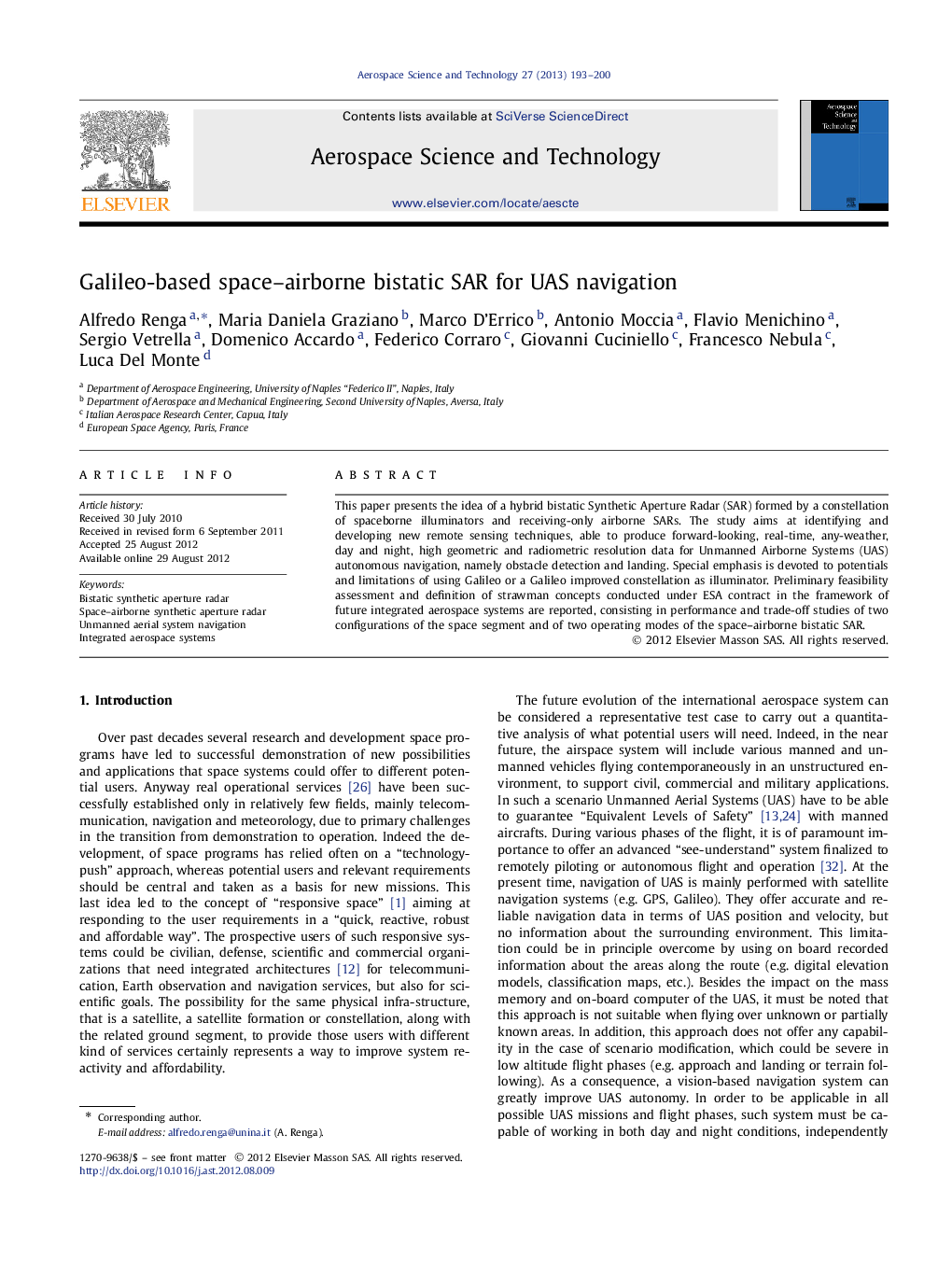| Article ID | Journal | Published Year | Pages | File Type |
|---|---|---|---|---|
| 1718217 | Aerospace Science and Technology | 2013 | 8 Pages |
This paper presents the idea of a hybrid bistatic Synthetic Aperture Radar (SAR) formed by a constellation of spaceborne illuminators and receiving-only airborne SARs. The study aims at identifying and developing new remote sensing techniques, able to produce forward-looking, real-time, any-weather, day and night, high geometric and radiometric resolution data for Unmanned Airborne Systems (UAS) autonomous navigation, namely obstacle detection and landing. Special emphasis is devoted to potentials and limitations of using Galileo or a Galileo improved constellation as illuminator. Preliminary feasibility assessment and definition of strawman concepts conducted under ESA contract in the framework of future integrated aerospace systems are reported, consisting in performance and trade-off studies of two configurations of the space segment and of two operating modes of the space–airborne bistatic SAR.
